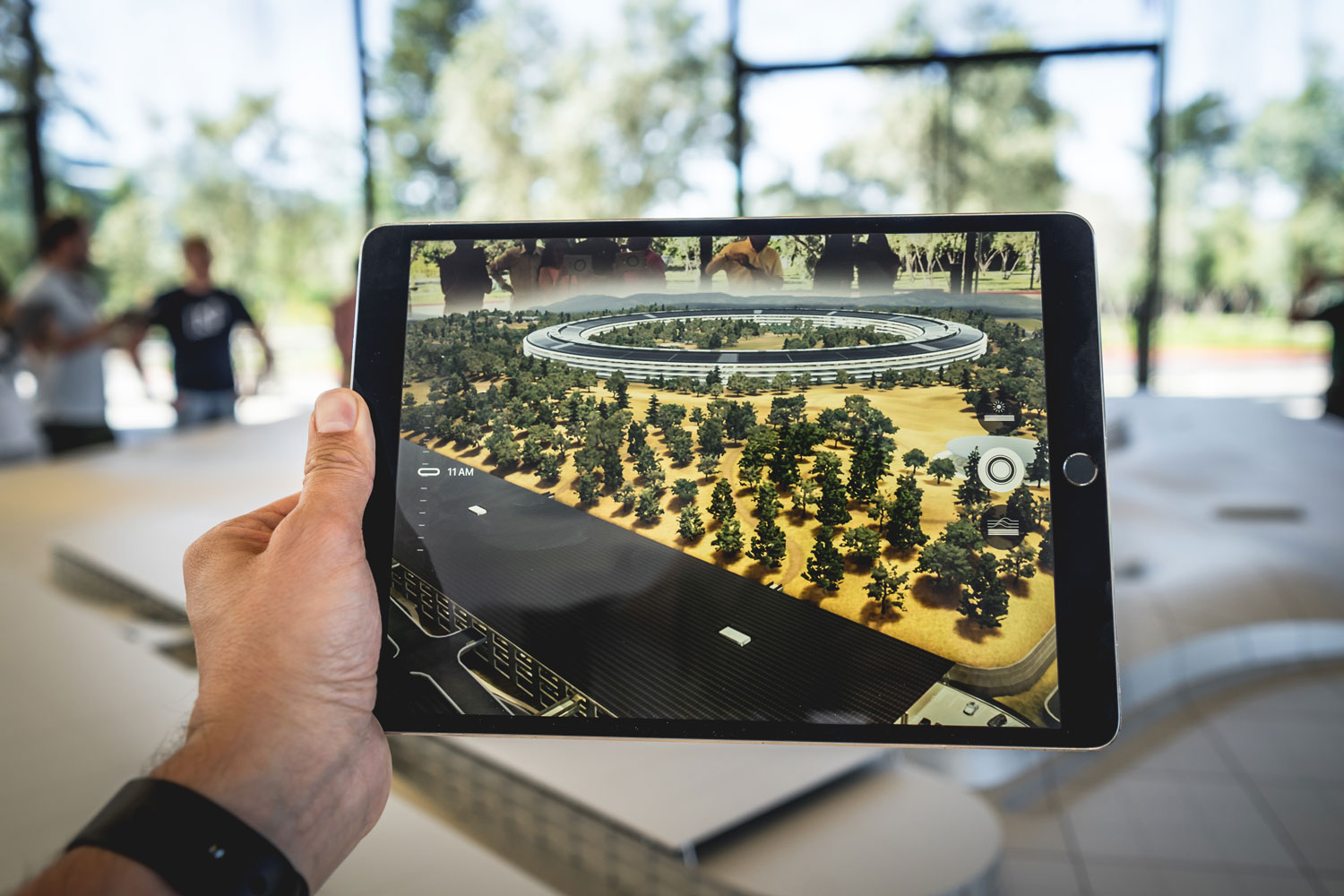Why augmented reality is becoming mainstream, in the Manufacturing industry?

Data Analyst
Experienced data analyst working with data visualization, cloud computing and ETL solutions.
November 27, 2019
Augmented reality is the latest technology that blends digital & analog worlds, for the ease of workings in the manufacturing industry. Augmented reality offers more ideas as well as opportunities for entrepreneurs to lighten their work-load while improving the quality of products. 3D models could be referred to as one of the initial augmented reality tools, which were used in the manufacturing industry. With the help of augmented reality, more innovation was brought to the forefront. This new technology is now becoming essential for the manufacturing industry. Almost all manufacturing processes that include floor details and design patterns in a factory are automated via augmented reality.
Emerging Applications via Augmented Reality
Operational Plans, Quality Assurance, Proper maintenance & Training
The first and major application, which is concentrated via augmented reality, would be essential instructions. These instructions, in the manufacturing industry, usually involve operational plans, instructions for proper quality controls and efficient ways to carry out proper maintenance of tools and processes. All these parameters demand proper training of the workforce and the know-how to work with augmented reality technology.
Use of IoT as an Augmented Reality Tool
IoT or Internet of Things is an augmented reality tool that works with artificial intelligence (AI). With the help of AI, automation of any type of process is made very simple and easy to work with. An added benefit would be, real-time data gathering via IoT tools that can be analyzed. This analyzed data can be used to improve the overall performance of processes.
Construction of 3D Models
The data gathered through IoT and other augmented reality devices are used for creating and designing 3D models. Augmented reality along with mixed reality tools helps a design team to visualize & interact with the blueprints they have created. These data are also used in creating 3D models, which gives an exact idea about areas of improvement. For instance, Microsoft Layout, an application released by Microsoft recently, does the intended purpose on a factory floor.
The second category of augmented reality applications would be those that enable remote collaboration. Let us look at some tools such as these:
Augmented reality tools that enable remote collaboration
Expert Assistance, Remotely
With the help of augmented reality tools, the design, as well as the manufacturing team, can work with inputs from Microsoft Remote Assist. The designers & manufacturers in a firm can pick brains of experts via this application from Microsoft. Remote expert assistance, aids in clearing any doubts and having discussions with peers in the field. This can be done while working on a design pattern or creating a manufacturing protocol. Remote Expert Assistance also helps in troubleshooting any problems that occur in the design or manufacturing floor.
Reviews of design or Immersive/3D images
Microsoft HoloLens and Azure help sales technicians to share design measurements with remote design teams. This augmented reality tool aids in reviewing designs & creating 3D images and sharing them for expert opinions. These opinions aid in creating the apt designs needed by a manufacturing team.
Immersive Technologies help transform the manufacturing industry
As mentioned before, augmented reality tools along with virtual reality & mixed reality assists humans in performing various complex tasks with speed and efficiency. It's an era where every gadget and tools are becoming smart via augmented reality. Immersive technologies have been developed that enable customer-centric applications to be incorporated into manufacturing processes.
Virtual reality and augmented reality technology have been used by various business enterprises; both big and small. Augmented reality can grab the attention of customers by taking them through an imaginary experience that interests them to get engaged. By intelligent use of augmented reality technology, a manufacturing enterprise can seamlessly transition from consumer-focused applications to employee & process-focused ones. Immersive technologies have the ability to engage users with the right information at the right time; thus connecting user-friendliness with manufacturing processes.
Immersive technologies being implemented by manufacturers
Some of the examples of immersive technologies being used by major automobile manufacturers include:
✔ Speech, language understanding, vision, Q & A, and dispatch.
- Ford using VR (Virtual Reality) to build more assembly lines.
✔ The whole process can be fine-tuned by identifying any potential hazards and removing them.
✔ Audi showrooms using immersive technology to showcase all car models that potentially cannot fit in a car showroom.
✔ Tesla has used AR (Augmented Reality) to improve its car assembly process.
All AR and VR technology tools aid in minimizing human careless mistakes & errors inside a major manufacturing process. These technologies (AR & VR) help turn out cars fast in an assembly line in car-manufacturing factories.
Lights-Out Manufacturing
AR (Augmented Reality) enables the manufacturing of processes during after hours, without any kind of human supervision. The manufacturing process is done with absolute precision. Some of the examples of manufacturing processes include chemical processing plants, food processing, and packaging, along with mass manufacturing of various simple products. For making manufacturing processes highly flexible, human hands & brain are a must. The only other entity that can replace human power for this purpose would be augmented reality technology tools.

Various applications of AR (Augmented Reality) in manufacturing processes
Designs that interact
As it is very difficult to create test prototypes for each of the manufacturing units, AR (Augmented Reality) technology tools are used. The VR (Virtual Reality) and AR (Augmented Reality) can create virtual prototypes, which can be put through various simulations for the purpose of quality testing. This aids in saving a considerable amount for testing processes and quality control checks. These designs interact and provide accurate precision results, which helps in eliminating any manufacturing flaws.
Precise & Intelligent Decision making
The evolution of manufacturing processes demands it to be agile. A vast amount of data needs to be analyzed, which could be tiresome for humans. In comes AR (Augmented Reality) can aid in analyzing the vast amount of data. This analysis will be useful for making critical decisions that would be precise and intelligent. The AR tools help in data visualization as well. It aids in executive decision making as well. This new technology of AR identifies areas of improvement, which can be used to enhance the quality of the manufactured product.
Maintenance that gets informed
Augmented Reality can help the maintenance team visualize the data pertaining to failed processes and products. This aids in keeping the manufacturing process equipment in tip-top fashion. The health of manufacturing units is monitored using AR (Augmented Reality) technology tools. An AR can help train amateurs to be more professional, especially in the maintenance of manufacturing equipment.
An inspection that is intense
Use of AR (Augmented Reality) combined with AI (Artificial Intelligence) along with sensor technology can detect even the subtlest of variations of quality. Thus, AR helps in efficient quality control and assurance, which is intense & effective.
Training on Immersive Technologies
For effective and efficient use of AR (Augmented Reality) and AI (Artificial Intelligence), which are parts of immersive technologies, on-job training is a must. New employees are trained for working with VR (Virtual Reality), AR, and AI technologies. This aids in people (workforce) getting used to the work-environment along with the ways to work with these new technologies.
The major advantages of AR (Augmented Reality) in the manufacturing industry
Apart from automating the majority of manufacturing processes using VR, AR, and AI-augmented reality can be used as a tool of digital marketing. The major aspects of digital marketing covered by AR, in regards to the manufacturing industry include brand awareness, customer engagement, and perceived value.
Brand Awareness
Augmented reality ensures the best online marketing process. More-and-more people are getting attracted to certain brands advertised through AR. One interesting example includes Pepsi's augmented reality ad at a London bus stop. This has shown how technology can help manufacturers stay competent among their competitors via innovative digital marketing ads. Advertising campaigns designed via AR are a hot topic among people, which boosts the sale of manufacturers, wholesalers, and retailers.
Engaging customers more than usual
Using AI and AR to gauge the preferences of customers have improved the marketability of various brands. One perfect example would be IKEA. Other brands that have employed ARs for digital marketing include Coca-Cola as well as Nippon Paints. Increased social interaction and engagement are observed with AR ads.
Boosting of perceived value
Interesting experiences will be provided to customers via AR ads by manufacturing companies, Research has shown a boost of around 35 to 40% revenue when products were marketed with AR ads. The AR ads have boosted the perceived value of products, thus giving profitable business to manufacturing industries
Why augmented reality is becoming mainstream, in the Manufacturing industry?
With so many features, AR (Augmented Reality) is definitely taking over the manufacturing industry. Microsoft has devised various web applications that aid AR technology. Manufacturing crews can use AR via these apps to automate the processes. Manufacturing processes employ AR technology to improve brand value, enhance user interactions and to boost revenue through digital marketing. All in all augmented reality helps manufacturing industries to stay on top of their competition. AR provides an essential way to be technologically advanced and evolve into the future.













